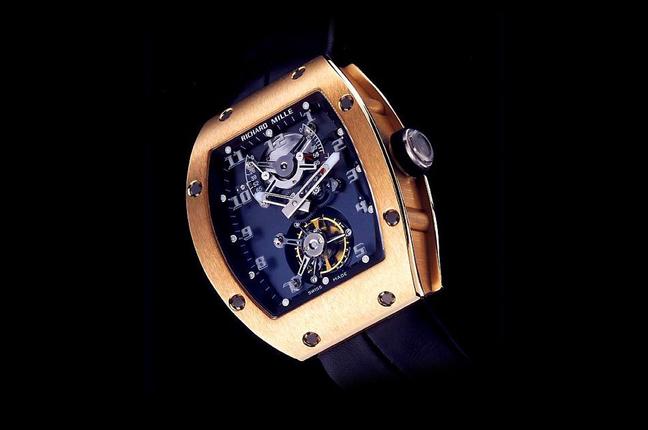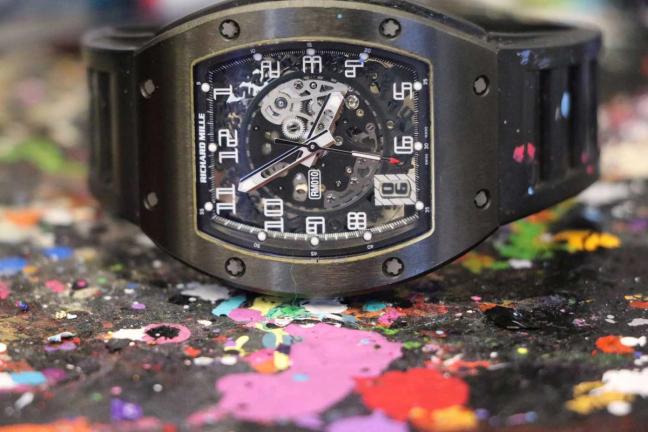Although founded less than two decades ago, Richard Mille’s eponymous watch brand has cemented itself as a leading trailblazer in the horolosphere. From early days cutting his teeth at bijou-sized companies to creating one of the largest luxury labels around, we dive into the history of one the world’s greatest innovators…

Early beginnings
Before his rise to global fame, Richard Mille had already earned himself a reputable career in horology. Starting out at the boutique French watchmaker Finhor during the mid-Seventies, he eventually undertook a managerial role in the chronometer division of Matra – a jeweller which bought out Finhor in 1981.
Years later, the Frenchman moved to jeweller Mauboussin to help set up the firm’s watch business. But, despite having held such prestigious roles, Mille was keen for more. Thanks to solid experience handling luxury jewellery and fine chronographs, he founded his own company, Richard Mille SA, in 1999 alongside Swiss manufacturer Audemars Piguet.

The RM 001
Although it would take the brand two years to unveil its inaugural watch, many believed it was worth the wait. Developed in collaboration with Renaud et Papi – the research-and-development arm of Audemars Piguet – and crafted in order to break the traditional codes of high-end watch design, the RM 001 firmly established itself as one of the most famous timepieces in the world.
Advertised as ‘a racing machine on the wrist’, the RM 001 tourbillon not only made a name for itself for being attached to a levered bridge of carbon nanofiber (a feature unheard of at the time), but also because it had an asking price of around $135,000 – twice the amount of the next most expensive tourbillon during that period.
Limited to only 17 units, it also set a new standard in exclusivity. There’s no surprise, then, that this it was heralded as a ‘dawn of a new era in watchmaking’ by the press.

The brand
Throughout the years, Mille’s collections – all of which have been made with a philosophy that places great value not only on the exterior of a product, but also its interior – have further bolstered the brand’s impressive repertoire. Notably, the RM 003 captivated buyers with its dual time zone function, the gear-stuffed RM 004 offered a split-second chronograph and the RM 022 featured a honeycomb orthorhombic titanium aluminide baseplate straight from NASA.
Not only renowned for producing technically-complicated mechanisms, Mille’s company has also come to be known as “the secret billionaire’s handshake.” In 2014, when asked by CNBC whether he had sold all of his $2.2 million sapphire crystal watches (the RM 56-02 Sapphire Tourbillon), he replied, “They’re all sold. All of them.” Distant commentators often question why buyers are so willing to shell out six- or seven-figure sums for such an accessory, but those in the know understand that a Richard Mille is no ordinary timepiece: rather, it is indeed a sports car for the wrist.

Not only are the shock-resistant and lightweight materials used in the RM chronometers – such as aluminium-lithium and orthorhombic titanium aluminide – akin to those found in racing cars, but few brands are as frequently associated with the sport than Mille’s. Namely, F1 driver Felipe Massa – a frequent wearer of RM accessories while racing – is considered an unofficial tester. During his crash at the 2004 Hungarian Grand Prix, the Brazilian was donning a ROM 006, and thankfully both driver and watch (owing to its carbon nanofiber baseplate) were left unscathed.

Other notable collaborations include those with Rafael Nadal (the clay court king would shatter five prototypes before the RM 027 – the timepiece he sported during his US Open in 2010 – was perfected), Natalie Portman (the RM 19-01) and Michelle Yeoh (RM 051). But Mille’s craft hasn’t just been acknowledged by famous names alone. In 2007, he became a member of the Foundation de la Haute Horlogerie in 2007 before winning the Aiuguille d’Or award – the most coveted accolade in the world of horology – later that year.

Richard Mille, today
At the beginning of this year, the Frenchman continued to blaze a rather wide trail in the watchmaking industry. Made in collaboration with McLaren, and designed with the intention of matching the automaker’s impressive feats, Mille launched the world’s lightest split-second tourbillon chronograph at Geneva’s Salon International de Haute Horlogerie. Incorporating Graph TPT (a 2D graphene composite that’s one atom-thick), the 38-gram-heavy, 75-piece-limited RM 50-03 is in a category of its own.

And, more importantly for Mille admirers, the RM 50-03 is a symbol that the high-end watch house continues to stick to the philosophy it was born on nearly two decades ago: exclusivity, innovation and an unyielding obsession with opulence.
Quite frankly, we wouldn’t want it any other way.
On the market for a new piece of wrist armour? These are the 10 classic watches you should have in your collection.

Become a Gentleman’s Journal Member?
Like the Gentleman’s Journal? Why not join the Clubhouse, a special kind of private club where members receive offers and experiences from hand-picked, premium brands. You will also receive invites to exclusive events, the quarterly print magazine delivered directly to your door and your own membership card.


